 Privacy on social media feels like it's fading away when it seems as though everyone, and their mothers, are posting their daily lives on line. Need an answer to something, you can check online forums. If you forget someone's birthday, Facebook will remind you.
Privacy on social media feels like it's fading away when it seems as though everyone, and their mothers, are posting their daily lives on line. Need an answer to something, you can check online forums. If you forget someone's birthday, Facebook will remind you. Thanks to a technologically advanced society and easy access to digital sources of communication, social media is becoming an increasingly effective, wide-ranging tool for nurses. However, with this resource comes great responsibility. As nurses navigate social networking sites, chat rooms, blogs and public forums, there is a dangerously thin line between professional and personal online etiquette. Health care employees must maintain patient confidentiality and privacy at all times, as well as serve as a positive representation of their place of employment. Inappropriate use of social media often leads to disciplinary action; and in the most serious cases, can negatively affect a nurse’s career and license.
Privacy Issues Regarding Nurses Using Social Media
“Nursing is a profession that is laden with risks related to disclosure of protected information,” says Jonathan Greene, social media expert and author of Facebook is a Pub Crawl: 15 Simple Strategies for Social Media Excellence. “For that reason, nurses have to be careful about anything that would violate HIPPA standards.”
According to the National Council of State Boards of Nursing (NCSBN), confidential information should be shared only with the patient’s informed consent, when legally required, or where failure to disclose the information could result in significant harm. Any breach of trust associated with a nurse-patient relationship has damaging repercussions, and often winds up hurting the overall trustworthiness of the nursing profession as a whole.
Breaches of patient confidentiality or privacy on social media platforms (whether intentional or inadvertent) can occur in many different ways, such as:
- posting videos or photos of patients – even if they can’t be identified
- posting photos or videos that reveal room numbers or patient records
- descriptions of patients, their medical conditions, and/or treatments
- referring to patients in a degrading or demeaning manner
A violation of patient confidentiality takes place as soon as a nurse shares information (or even the slightest bit of details – no matter how insignificant they may seem) over the Internet with someone who is not authorized to receive such information. Examples include reflecting on the severity of a car accident victim’s injuries, or even commenting on the number of medications that a patient has to take.
Beneficial Ways that a Nurse Can Use Social Media
With the ability to establish positive interaction and communication with patients (and their family), Debi Deerwester, DNP, FNP-BC, Chief Clinical Officer/Chief Nurse Practitioner Officer/Vice President of Clinical Operations at WhiteGlove Health, says there are many ways a nurse can utilize social media to a healthcare advantage, such as promoting the profession through educating the public.
Social media outlets and actions beneficial to nurses include the following:
- Blogging: “Blogging on the industry they love in a positive and thoughtful way, [nurses] can become subject matter experts,” says John Lincoln, of Internet marketing company Ignite Visibility. “Having an individual blog and social media presence shows their dedication to the field, helps them stay on top of trends in the industry and looks great to employers.”
He also suggests that increasing visibility through an online presence can help nurses get ahead in their career, which in some cases, could lead to a higher position and/or a raise.
In addition to promoting their value within the workplace, nurses can also use social media to promote their outside, health-related endeavors and interests. “Usually I reserve public posts about health care to try convincing colleagues to buy my books,” says Nick Angelis, author of How to Succeed in Anesthesia School (And RN, PA, or Med School).
- Twitter: Offering a popular real-time form of communication, Twitter is often seen as one of the easiest ways to maintain contact with people, especially in times of crises. From posting health safety notices to explaining drug recall information to answering emergency questions, nurses can provide quick responses and critical assistance to the public.
Twitter is also an effective way to create a health-related conversation with the public, or get a healthcare-related topic trending. “…nurses can probably capitalize on social media as an excellent tool for creating awareness about preventative health campaigns, general flu/pandemic information, educational tidbits…,” says Greene.
- Facebook:With the ability to leave messages (both public and private), upload videos, and post photos, nurses are able to connect with others on many different levels when using Facebook, and can also help bridge the information gap between health care providers and patients.
“There is an inherent need within healthcare to pass information on to a particular patient and to connect with a patient on a level that promotes not only biological health, but also psychological health and community health,” says Ben Miller, a student at Vanderbilt Law. “In this sense, a nurse Facebook messaging a teenage patient about medicine changes is easy and builds trust within the system.”
- YouTube: The visual and audio aspect of YouTube has a profound effect on a viewer’s understanding of health care, medical concerns, surgical procedures, and other treatments.
“I use YouTube to broadcast educational videos about anesthesia school…,” says Angelis. “In general, social media can be a positive force to enhance the role of nursing in the community and the perception of nursing among our friends and the public at large.”
- Discussion Groups & RSS Feeds:Social media also provides nurses with an outlet to connect with other healthcare professionals for personal, emotional, and educational reasons. From getting tips on how to cope with workplace stress to answering questions about advanced nursing degree programs, there are many nurse-specific online groups to join or participate in.
“Social media groups can provide support and help nurses stay positive even in hard times,” says Lincoln. “By following the right social media feeds on sites like Twitter, Facebook, Google + and LinkedIn, nurses can get the latest medical news.”
According to Greene, nurses who interact with others across social media channels also have an opportunity to “humanize the nursing profession.” Examples include spotlighting employer achievements, sharing nurse profiles, and providing one-on-one communication.
How Nurses Should NOT Use Social Media
“From a legal perspective, nurses using social media to reach out to patients pose a few major privacy issues,” says Miller. “Since most social media systems present security problems (in how they’re “built”, infrastructure, and/or how the user interacts with the specific social media system), open sharing of sensitive and confidential information leads to conflict with HIPAA.”
“Most of these social media systems (such as Facebook) are not as privacy forward as we believe,” Miller says. “Even something as simple as texting among nurses about a specific patient raises huge privacy issues.”
Also, social media platforms tend to create a false sense of security for nurses who often believe they are voicing their opinions, engaging in discussions, and posting images under the protection of privacy settings. Anything sent privately to an individual or posted on a closed forum has the potential to become public knowledge. Additionally, deleting statements and images from a social media account does not mean they have been completely removed from the Internet.
As a rule of thumb, nurses should not use social media to:
- Complain About or Comment on the Health of Patients: The American Nursing Association warns against making disparaging remarks about patients (even if they’re not identified) in order to avoid problems with social media. “Do not talk about how rude a patient is, how bad they look or unhealthy they are…it will find a way to leak out, and even if it doesn’t, it causes others to view you in less professional nature, as well as the institution you are associated with,” says Lincoln. “It can also damage others perception of your character.”
- Post Photographs of Patients: After posting a picture of a young cancer patient on Facebook, a nursing student was expelled from school, and the nursing program barred from using the pediatric unit for teaching after the administration was alerted. The hospital and patient were easily identified through the picture, which is a violation of HIPAA.
Even if a nurse gains permission from a patient to take pictures, employers can still take action. Despite getting the consent of a patient to photograph an injury, an emergency room nurse who shared the images on a nursing forum for learning purposes was disciplined even though the patient’s face was not visible; the type of injury made it easy to identify the patient.
- Rant About Place of Employment: Because of the nature of work that a nurse does, speaking negatively on social media about co-workers, administrators, job duties, their place of employment, and/or workplace policies can lead to disciplinary actions. These types of negative online comments also place a hospital or doctor’s office in a bad light, as well as jeopardize a nurse’s job security. Even when opinions are voiced under the strictest privacy settings, there is always the possibility that online commentary can reach unintended readers.
To minimize the chances of violating workplace policies, using a personal email address as a primary means of identification on social media accounts instead of an email address associated with a hospital or place of employment is highly recommended.
Additionally, when writing a blog or participating in online activities that have the potential to negatively impact the reputation (or go against the policies of a healthcare employer), avoid establishing a direct connection to the place of employment. For this reason, many nurses comment anonymously or write blogs using a pseudonym.
- Blow Off Work-Related Steam: Because of the visibility that social media platforms provide, Lincoln says it is critical for nurses to maintain composure and professionalism at all times.
“One of the most important things for a nurse to avoid is speaking negatively about a patient on social media,” he says. “This might seem like a no-brainer, but everyone gets frustrated at times and in many cases in medical situations, a nurse may feel overwhelmed.” Lincoln stresses to refrain from saying anything negative about “patient interaction, the prospect of patient recovery, or even just a general bad day on the job.”
- Use Offensive Language and/or Voice Offensive Comments: Since nurses work with a diverse flow of patients that come from a wide range of economic-, racial-, ethnic- and religious backgrounds, making social media comments that are threatening, harassing, profane, obscene, sexually explicit, racially derogatory, homophobic, or deemed controversial are often grounds for discipline at the workplace.
Social Media Policies
An increasing number of hospitals, medical facilities, and healthcare employers are developing and implementing social media policies, including the likes of the American Medical Association, the Cleveland Clinic, the Mayo Clinic, Vanderbilt University Medical Center, M.D. Anderson Cancer Center, Children’s Hospital Los Angeles, and Kaiser Permanente. The National Council of State Boards of Nursing (NCSBN) also offers a white paper titled “A Nurse’s Guide to the Use of Social Media.”
Lincoln feels that Massachusetts General Hospital’s social media policies are an example of having “really done it right.” Not only does Mass General have social media guidelines in place for employees, but also a policy established for those who interact with the hospital on social media.
| “Please understand that we cannot respond to every comment, and that we cannot offer medical advice, diagnosis or treatment via the Internet. If you have a question about your specific medical condition, you should contact your doctor or other qualified healthcare professional.”“For your privacy, you should consider carefully before posting personal medical information to the Internet. Please remember that your posts and comments are available for all to see.”“Users are responsible for content submitted to social media sites.” -from Guidelines for Participation in Mass General Social Media |
“I am a strong believer that every company should have a social media policy in place,” says Lincoln. “This can help avoid legal issues, and give employees and clients a clear perspective on what the company is comfortable with being shared online.”
Consequences of Social Media Abuse
The consequences regarding a nurse’s improper or inappropriate use of social media platforms come with varying levels of discipline – all of which are dependent upon the action in question, workplace regulations, and any social media policies already in effect.
For example, not only can a medical facility take action against a nurse who has violated a patient’s privacy, but also the state board of nursing. State laws can additionally come into play, and it is not uncommon for legal and criminal investigations to take place when a nurse crosses the line.
Disciplinary actions that individuals can face include:
- fines
- suspension
- required sensitivity training
- expulsion from nursing school
- being fired from a job
- loss of licensure
- criminal charges
- jail time
The most serious offenses often involve law enforcement, with some cases being referred to the FBI for investigation of HIPAA violations, as seen in the firing of two nurses who photographed and posted the pictures on the Internet of a patient that underwent an X-ray procedure for rather sensitive, easily identifiable circumstances. Incidents of a sexual nature, such as exposing the image of a patient’s buttocks online, can also involve the Sex Crimes unit of the local police department.
Nurses who abuse social media (as well as digital and electronic media while on the job, such as taking cell phone pictures of patients) also cause their employer to come under scrutiny and suffer consequences, such as the admissions ban imposed on nursing home Kitsap Health & Rehabilitation Center for employing workers that took nude photographs on their cell phones of dementia patients. The incident led to an investigation of the facility, and the threat of being cut from the Medicare/Medicaid program, which provides vital reimbursements of funds for the services they offer.
In conclusion, social media policies for nurses will continue to evolve in order to keep in line with advancements in technology and the Internet. The key to successfully navigating the ups and downs that come with having an online presence and identity is to find a happy, safe, and responsible middle between enjoying the personal and professional benefits of social media without breaking the rules of patient privacy and confidentiality.
In addition to being mindful of the importance regarding the disclosure of patient- and workplace-related information via social media…keeping up with workplace policies, relevant state and federal laws, and professional standards as they apply to the nursing profession are just as significant.
Want more? Join our bi-weekly newsletter for the best content in Nursing!


 If you’re thinking about continuing your education or are just starting out with your Nursing education, we think this article might be helpful to you. Let us know what you think.
If you’re thinking about continuing your education or are just starting out with your Nursing education, we think this article might be helpful to you. Let us know what you think.
 This is an article that might be right up your alley. It’s about things people say to Nurses. Sometimes comments are made that are totally innocent and mean no harm. Other comments are just plain ignorant, annoying, insulting, stupid or rude and usually the commenter has no idea they are being offensive.
This is an article that might be right up your alley. It’s about things people say to Nurses. Sometimes comments are made that are totally innocent and mean no harm. Other comments are just plain ignorant, annoying, insulting, stupid or rude and usually the commenter has no idea they are being offensive.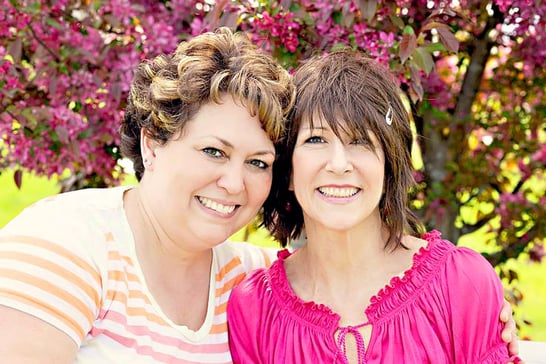 Two complete strangers, both named Tricia, meet and after 10 days one of them asks the other to take care of her 8 year-old son if she dies. Nurses are known to be caring and loving, always going the distance to help anyone in need. This story shows you a Nurse who goes beyond that. We see there are still great people out there and the power of instincts and compassion can save lives in more ways than one.
Two complete strangers, both named Tricia, meet and after 10 days one of them asks the other to take care of her 8 year-old son if she dies. Nurses are known to be caring and loving, always going the distance to help anyone in need. This story shows you a Nurse who goes beyond that. We see there are still great people out there and the power of instincts and compassion can save lives in more ways than one.  When working closely with patients that are undergoing tests or admitted to the hospital for several days, do you find they look to you for their emotional and spiritual needs as well as their physical needs? If your answer is yes, how do you help them with their spiritual needs? Do you feel this is something beyond your training and scope of experience? Do you see it as a necessary part of your job? Are you comfortable with it?
When working closely with patients that are undergoing tests or admitted to the hospital for several days, do you find they look to you for their emotional and spiritual needs as well as their physical needs? If your answer is yes, how do you help them with their spiritual needs? Do you feel this is something beyond your training and scope of experience? Do you see it as a necessary part of your job? Are you comfortable with it?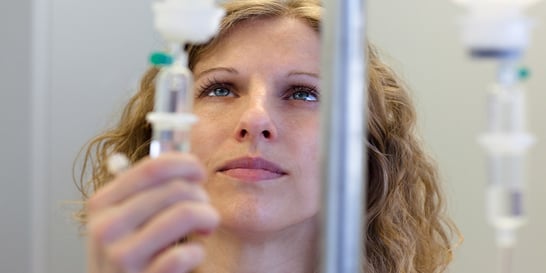
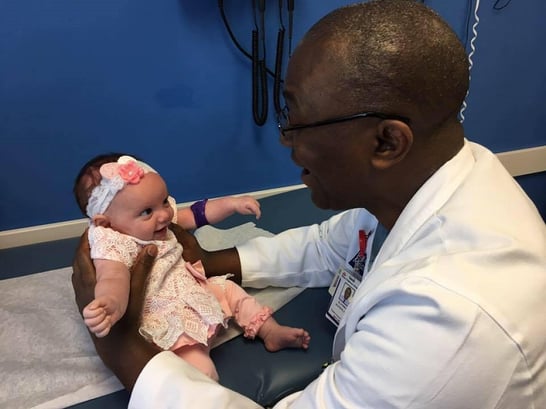 Imagine being able to say you were born twice, in fact, you had your first surgery before you were born as well.
Imagine being able to say you were born twice, in fact, you had your first surgery before you were born as well. 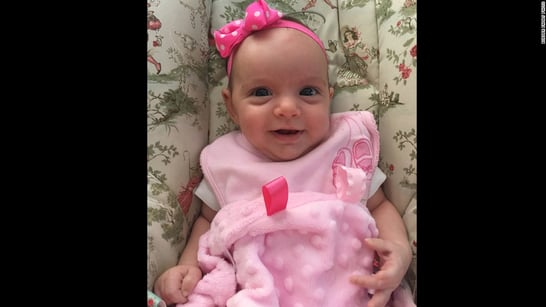
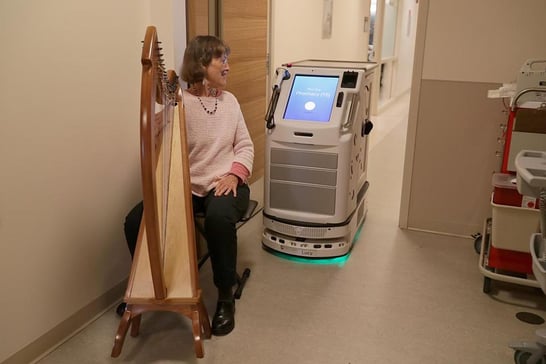 Technology continues to make strides in both our professional and personal lives. This article is about a robot that’s being tested to deliver medication to chemo patients, thus eliminating the step of having to wait in line for medication after a very lengthy day of chemo. This is a new technology being tested at Dana Farber Cancer Institute and patients are enthusiastic about it.
Technology continues to make strides in both our professional and personal lives. This article is about a robot that’s being tested to deliver medication to chemo patients, thus eliminating the step of having to wait in line for medication after a very lengthy day of chemo. This is a new technology being tested at Dana Farber Cancer Institute and patients are enthusiastic about it. Science and Nursing have always gone hand-in-hand. You can’t be a Nurse without taking all of those science classes. Do you know you can be a Nurse and work as a researcher? Perhaps there’s a malady you want to learn more about and in researching it, you find new discoveries that will help eradicate it.
Science and Nursing have always gone hand-in-hand. You can’t be a Nurse without taking all of those science classes. Do you know you can be a Nurse and work as a researcher? Perhaps there’s a malady you want to learn more about and in researching it, you find new discoveries that will help eradicate it.
 We here at DiversityNursing.com have the greatest respect and appreciation for what Nurses do in their profession every day. We value your education, experience, compassion, kindness, great advice and appreciate you being there when your patients need you. The healthcare system couldn’t exist without Nurses. You make the hospitals, clinics, out-patient centers, schools and insurance companies be able to do what they are in business to do. In short… you are amazing!
We here at DiversityNursing.com have the greatest respect and appreciation for what Nurses do in their profession every day. We value your education, experience, compassion, kindness, great advice and appreciate you being there when your patients need you. The healthcare system couldn’t exist without Nurses. You make the hospitals, clinics, out-patient centers, schools and insurance companies be able to do what they are in business to do. In short… you are amazing!